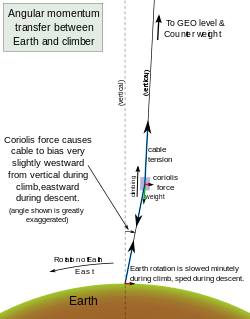Some mildly good news: I have tapped into a free lance site that nets me a few bucks for custom work, I had to pay a small fee for that privilege. It wasn’t much and thankfully the site appears so far to be legit, I’ve almost recouped my initial investment on the very first job and there are others waiting. It’s dull work, the job I chose is writing and formatting a description for a kid’s bike helmet. But it’s work in my field that I can do from home in a bathrobe and the thing is, I wouldn’t have been able to take even that small risk without your help over the last few weeks. I have successfully leveraged your investment in me.
Today is the last day, if you’ve been considering it, my Paypal email at DarkSydothemoon-at-aol is still open. You know you want to!
How about a pure fun science-y-fiction-y article to end this holiday blegathon? I have a timely one in mind: The Dawn spacecraft is closing in on the enigmatic dwarf planet Ceres, it officially arrives on March 6, but by the end of Jan we’ll have the best images ever taken and that’s got a lot of people interested. Ceres is a mysterious world indeed! Right now the best enhanced image we can get using the Hubble Space Telescope is the one above. But in the next few weeks Dawn will see it like its never been seen before. As main belt asteroids go, it’s an unusually colorful world, and its exciting to see any planet up close and personal for the very first time.
The space elevator is an awe inspiring concept. It is exactly what it sounds like. A huge elevator in space reaching all the way to the surface on which cars ful of raw materials or people could ride up and down in comfort. It works because planets rotate, lending them a special altitude, called geostationary for Earth, we could just say geosynch for worlds in general. For Earth it’s about 22,000 miles above the equator. A satellite there will orbit every 24 hours, meaning it will stay above the same point, more or less with a little bit of station keeping. That’s prime real estate for comm sats.
is an awe inspiring concept. It is exactly what it sounds like. A huge elevator in space reaching all the way to the surface on which cars ful of raw materials or people could ride up and down in comfort. It works because planets rotate, lending them a special altitude, called geostationary for Earth, we could just say geosynch for worlds in general. For Earth it’s about 22,000 miles above the equator. A satellite there will orbit every 24 hours, meaning it will stay above the same point, more or less with a little bit of station keeping. That’s prime real estate for comm sats.
So what if a very strong tube was balanced at that point, a little mass above and a long thin tube below reaching all the way to the surface. The bottom would just float there, eerily, stretching up overhead past the sky into invisible distance. If it had rungs on it, you could theoretically climb a ladder into space. For Earth that would be quite an engineering feat! We don’t have materials with enough strength to hold up. But the Earth is just one case.
The factors determining the feasibility of an elevator are mass/gravity of the object in question, its size, and how fast it spins. The equation is there on the left if you want to get all nerdy. Where a is the semi-major axis, P is the orbital period, and μ is the geocentric constant of 398600 km3/s2. The ideal planet would be small and spin fast.
Gas giants are a total loss, on the order of a hundred to two thousand miles of elevator weighed down by prodigious gravity threading between moons and rings. Closer to home, our moon is certainly small, the gravity low, but it spins really slow, about once a month, same as its orbit around Earth. If it were out there by it’s lonesome, geosynch would be about 50,000 miles out, twice Earth’s. Mars works better, low gravity, 24 hour day, meaning a little over 10,000 miles above the surface. Smaller planets like Pluto or Mercury might appear more attractive, but Pluto rotates once every six-plus days and has a bunch of moons that would mess up any delicate structure like an elevator. Mercury is tiny and has no moons, but it’s a dense ball of rock and metal spinning every 58 days. The absolute worst is Venus, its backasswards day is longer than its 224 day “year”. Geosynch on Venus would probably reach halfway to the sun many millions of miles away.
But Ceres, with a nine hour day and surface gravity of 0.03g hits the geo sweet spot. Geosynch would be a mere 490 miles above the equatorial surface! And that my friends, we could build. Rather easily in fact. If I’ve done my math right, a single strand of 11mm static line rope would do the trick and have plenty of strength left over to support many climbers and loaded cars zipping up and down in the low gravity.
OK for the curious, just be advised we’re going to hastily mix SI and English units here in both Earth and Ceres gravities: a 790 km (490 miles) length of New England KM III 11mm Static Line Rope at 86g per meter would mass about 68000 kg but weigh about 4500 lbs on Ceres, actually significantly less above Ceres since the gravity would drop off with altitude, but it would also have to have a counter weight on the orbital side. That gets into some interesting — and highly doable — calculus. But sticking with simple math, that particular rope has a breaking strength of over 3500 kg on Earth, meaning it could hold over 7000 lbs of force or well above the estimated 4500 lbs of rope weight on Ceres. Ergo it could hold its own weight and then some. This gets past the big strength restriction for elevator materials we need on other planets. And to think my friends teased me in college that math couldn’t be used for anything practical …
Let’s leave aside the headache of moving 68000 kg from Earth’s surface to Ceres orbit. Except to say something that would grow in place like some sort of space plant or build itself like some sort of nanotech device using local resources and sunlight would be way better.
Install several elevators on Ceres and the next step would be a really cool project: ringworld! A ring completely around the planet, like a suspension bridge with no end points. This is a titanic structure. Let’s call the diameter an even 1000 miles, that gives a circumference of 2 x 500 x 3.14159 (2 x Radius x Pi) or about 3150 miles. Now, you might ask yourself, why would that be a good thing to have?
Well, in all honesty it might not be a good idea at all. But the ring is rotating fairly fast, we might be dredging up water and other materials from the surface, we can hang points off the ring sticking out pretty far into space and we can get to those points just by moving along the ring, basically like driving over a bridge or hauling along a ski lift — hell of a ride! That means we can now have a giant sling-shot, we can sling stuff off with fair precision and enjoy lots of launch windows to many places in the solar system. We’d be converting the angular momentum of the ring which is, albeit loosely, attached to Ceres to interplanetary delta V. It’s not free, it would screw the ring up without careful station keeping. But properly managed it could turn Ceres the giant resource mine into the grand central station freight hub between the inner and outer solar system.
The other good thing about using Ceres is, if we screw up and the elevator or ring get out of whack and comes crashing down or gets all twisted up, so what? I hope I’m wrong, but odds are Ceres is lifeless icy wasteland anyway. So yeah, it’s far from clear if space elevators are a viable idea, there’s a cra-cra factor involved here. They might be so much fantasy, like Jules Verne’s moon cannon. But it’s fun to speculate and Ceres looks like an ideal place to actually find out, someday over the rainbow.



However, getting the production facility up and running on Ceres in the first place is a bit tougher. ;)
Of course, one of the problems with that is that the orbit of Phobos is only a little under 6000 miles above the surface, meaning it’s going to be flying past your elevator. Deimos is less than 15,000 miles, so while it’s above the Areostationary point, it’s may still be below the counterweight of the elevator.
I know somebody looking at this once suggested adding a low-frequency vibration to the elevator so it could swing from side to side and let Phobos pass by in the middle. (I probably read it in an SF story somewhere, no idea whether the author got it from anything more serious.) Of course, this adds a whole new set of complications to the engineering and operations, as you have to start timing the climber along with the swing of the elevator, and potentially using the elevator car to help kick the swing.
Great article. here. Shared. Thankyou. :-D
***
“I consider it quite conceivable that the day may come when Ceres will be the astronomical centre of the solar system.”
– Page 66, chapter 5 “The World Ceres” in ‘The Tragedy of the Moon’ by Isaac Asimov, Mercury Press, 1973.